GoDaddy Domain Review: GoDaddy Domain, one of the leading domain registrars in the industry, offers a wide array of domain services for individuals and businesses alike. With over two decades of experience, GoDaddy has become a household name, providing user-friendly interfaces, excellent customer support, and an extensive selection of domain extensions.
In this review, we delve into the features, pricing, and overall experience of using GoDaddy Domain, helping you make an informed decision about your online presence. Whether you’re a seasoned website owner or just starting your online journey, GoDaddy Domain has something to offer for everyone.
Table of Contents
GoDaddy Domain Review: An Overview
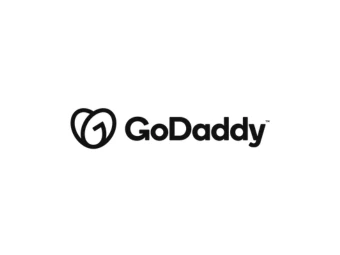
GoDaddy Domain Registrar is a Great one. It’s easy to use and offers proper customer support for users. Of all the domain registrars we’ve reviewed, GoDaddy has one of the broadest selection of domain extensions. However, its domains are expensive compared to rivals, especially for individuals and small businesses.
GoDaddy is an American domain registrar and web hosting provider founded more than two decades ago. It is one of the largest companies in its industry, with more than 20 million customers. The company employs more than 9,000 people worldwide.
GoDaddy offers domain name registration, cloud hosting and a website builder. It also provides complementary digital marketing tools for customers.
We tested GoDaddy thoroughly to give a detailed and unbiased review. We evaluated the web hosting platform based on specific criteria, such as price, features, customer support, ease of use, etc.
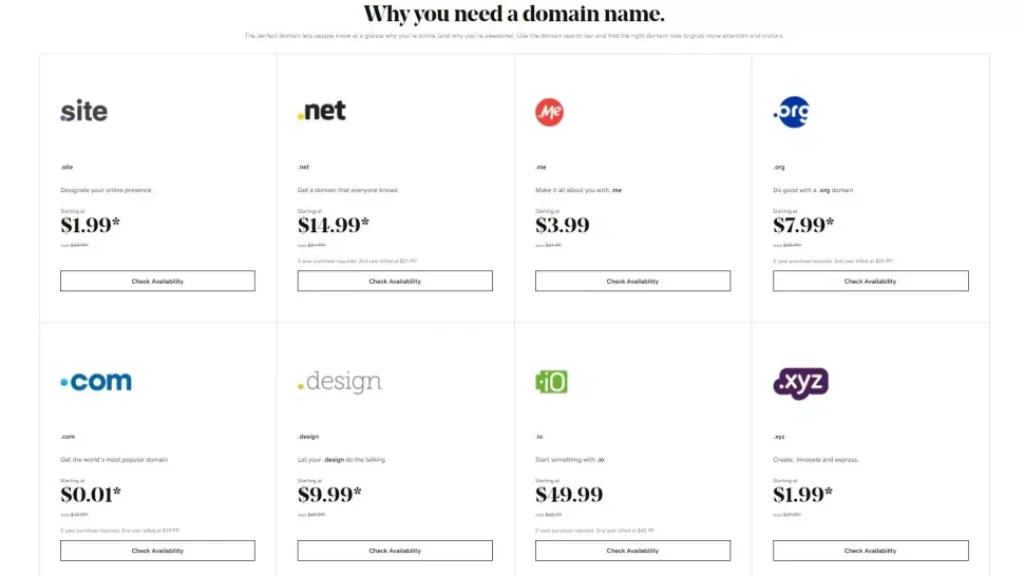
Plans & Pricing
GoDaddy charges different fees for different domain names. Common domain extensions such as .com, .net., .org, and cost between $19.99 and $25 per year, while uncommon ones such as .cloud, .blog and .today cost between $30 and $40 per year. However, select premium domains can cost hundreds or thousands of dollars. GoDaddy’s prices are significantly higher than rival platforms.
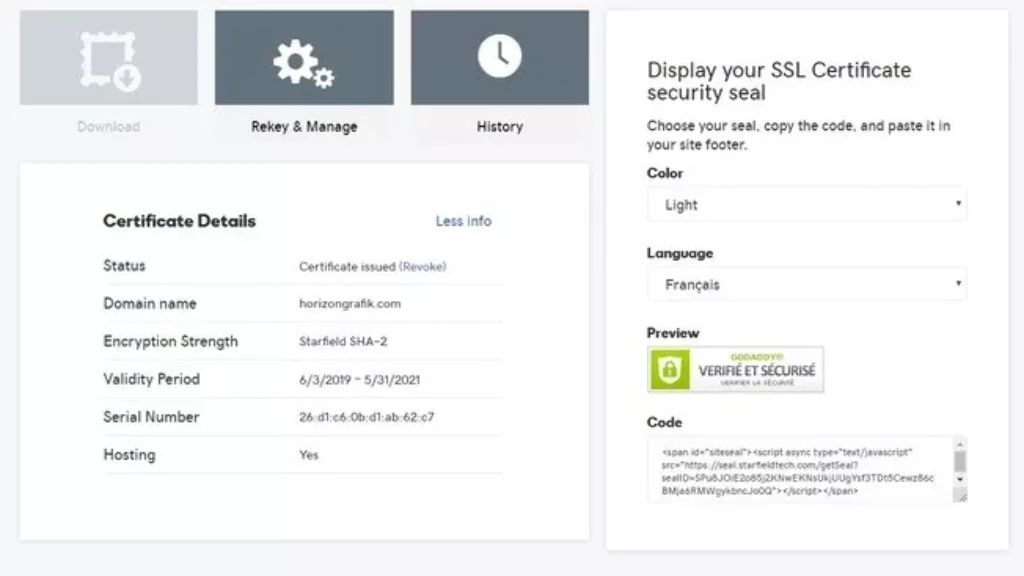
In addition, you can purchase SSL certificates for your GoDaddy domains. They cost between $95 and $245 per year.
Features
You can register any domain name available through GoDaddy. One of the great advantages of the platform is that it offers a wide selection of domain extensions. Its domain names fall into two categories; generic top-level domain and country-code top-level domain.
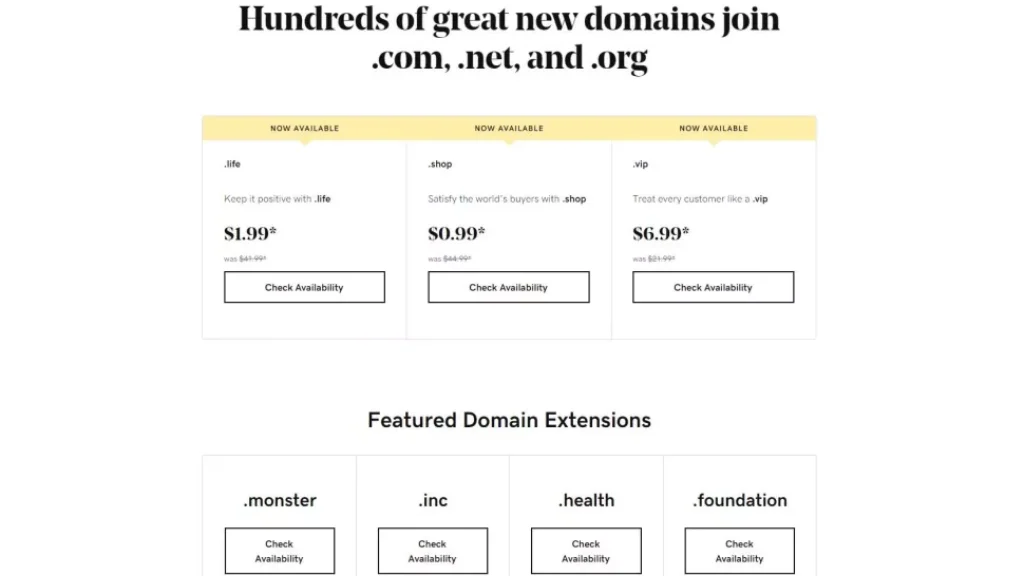
Generic top-level domains are those that are easily recognized with a suffix attached to the domain name. They are not tied to geographic regions or special authorities. They can be purchased by any person or organization. The most common are .NET, .COM, .ORG and .CO.
Country-code top-level domains are those that are typically used or reserved for a special country or region. They all have two letters, with abbreviations representing the names of various countries. Some examples are .CA (Canada), .CU (CUBA), .DJ (Djibouti) and .CC (Cocos Islands).
Registering a new domain name at GoDaddy is easy. The first step is to visit the official home page (GoDaddy.com). Once the home page loads, you will see a search bar where you can check if the domain you want is available. If it is, you can immediately add it to your shopping cart. Otherwise, GoDaddy will ask you to search for a new domain name or select a different variant.
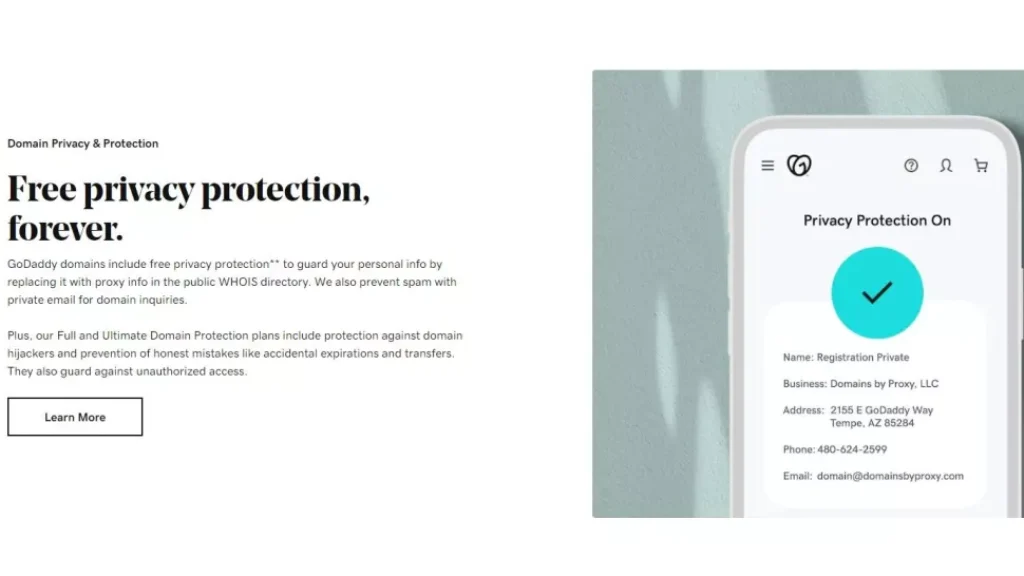
If the domain name you want is already taken, do not give up. You can try to acquire it, but in a different way than buying a new domain. The first step is to find out who owns the domain. You can do this by looking up contact information in the public WHOIS database. This database contains the information collected when someone registers a domain name or updates their DNS settings.
There is a search tool in GoDaddy’s WHOIS database that you can use. If you type the domain name into this database, you should see the email address used to register it. In some cases, domain name owners turn on privacy protection so that their information does not appear in the WHOIS database. It is likely that these people will not receive bids for their domains.
If you see an email associated with a domain, you can contact them with an offer and wait for a response. This process usually takes quite some time, so be patient. There is also no guarantee that the client will be willing to accept your offer.
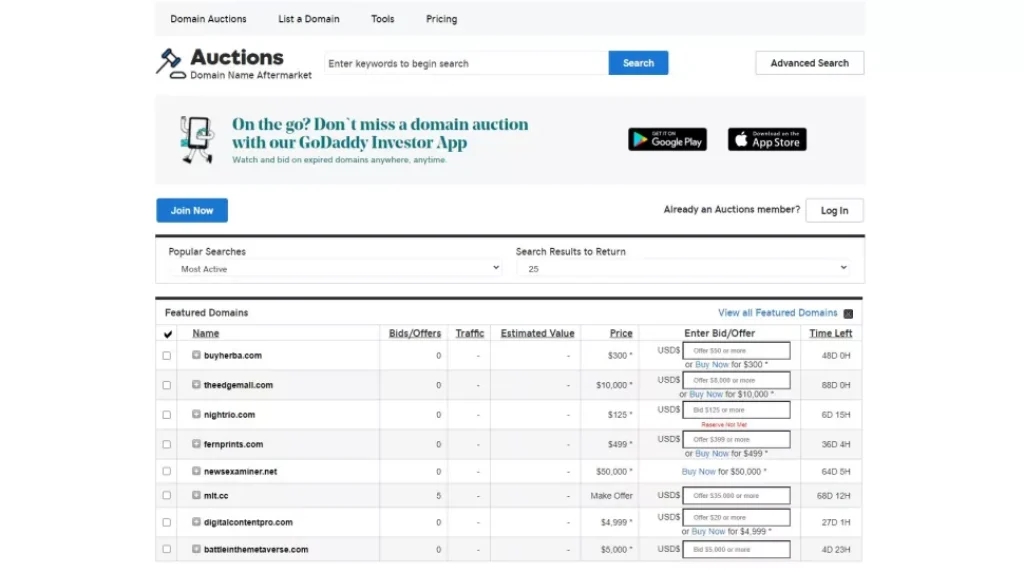
GoDaddy also allows users to participate in auctions for specific domains. GoDaddy Auctions is a marketplace for domain sellers to find potential buyers. It is an auction-based model, so the buyer with the highest bid wins.
You can also transfer a domain name registered elsewhere to GoDaddy, and the process is fairly straightforward. You can also purchase add-on services for your domains from GoDaddy, such as professional emails and an SSL certificate.
Interface & In use
Signing up and creating a GoDaddy account is quite simple. You can create an account using your email or a Facebook, Google or Amazon account if you have one.
GoDaddy’s tools are easy to use. The interfaces are usually clean, uncluttered and easy to navigate.
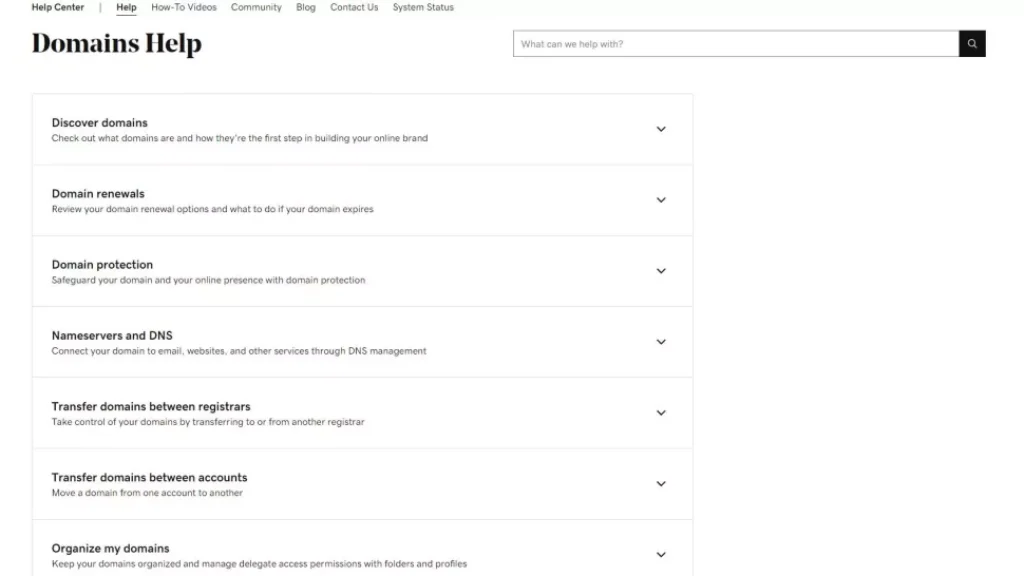
Customer Support
GoDaddy offers 24/7 live chat and phone support. There are different mobile numbers to contact depending on your country of residence. GoDaddy has over 20 million customers, so the support lines get jammed from time to time when there is high demand.
The Competition
GoDaddy’s main competitors are Namecheap, Bluehost and IONOS. GoDaddy is more convenient and reliable than these rivals, but significantly more expensive.
FAQs
Can I transfer a domain from another registrar to GoDaddy?
Yes, you can transfer a domain from another registrar to GoDaddy. First, unlock the domain at your current registrar and obtain the authorization code. Then, initiate the domain transfer process on GoDaddy’s website. Follow the steps, enter the authorization code when prompted, and pay for the domain transfer. The transfer may take a few days to complete.
What is a domain extension or TLD?
A domain extension, also known as a Top-Level Domain (TLD), is the part of the domain name that comes after the “dot.” For example, in the domain “example.com,” “.com” is the TLD. Common TLDs include .com, .org, and .net, while new options like .blog, .app, and .tech have also become available.
How do I protect my personal information in WHOIS database?
To protect your personal information from being publicly accessible in the WHOIS database, you can opt for domain privacy protection. GoDaddy and many other registrars offer this service for a fee. Domain privacy protection replaces your personal details with generic contact information, safeguarding your privacy.
Can I purchase more than one domain extension for my website?
Yes, you can register multiple domain extensions for your website. It’s common for businesses to secure various TLDs (e.g., .com, .net, .org) to protect their brand and make it easier for users to find their website.
What steps can I take if my desired domain name is already taken?
If your desired domain is already registered, you have a few options. First, consider alternative domain names or variations. If the domain appears inactive, you can try to contact the owner to inquire about purchasing it. Additionally, you can monitor domain auctions or use a domain brokerage service to negotiate a potential acquisition.
Mike DaVinci HighTechBlogging.com
Mike DaVinci is a skilled content writer with a talent for storytelling. He specializes in creating captivating narratives that engage readers and leave them feeling inspired. His writing has been featured in various publications, including magazines, blogs, and business websites. Mike’s particular interest in human interest stories allows him to uncover the heart of any story and convey it to his readers in an emotional and authentic way. He believes that storytelling is a powerful tool for connecting with people and inspiring positive change in the world.







